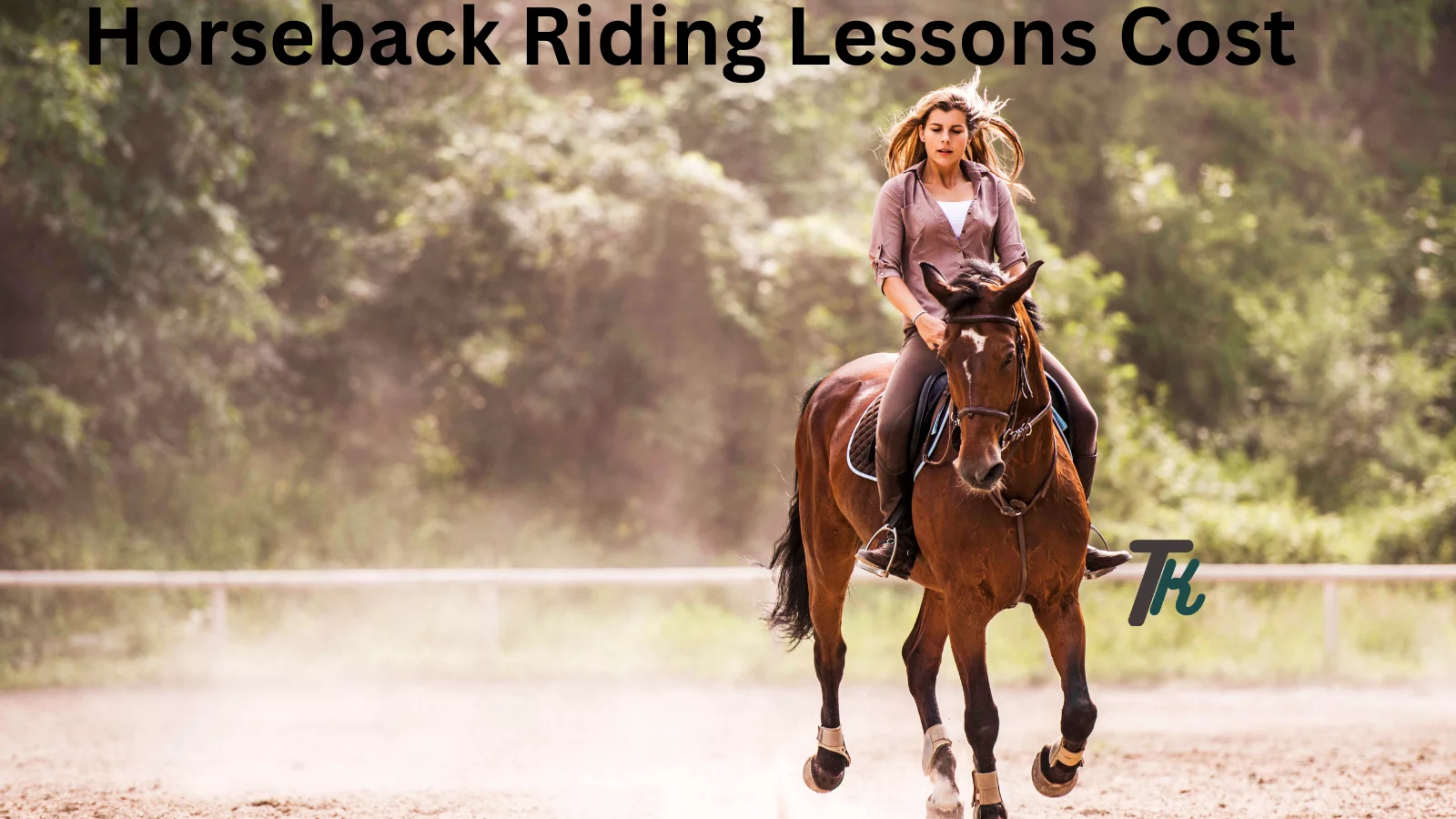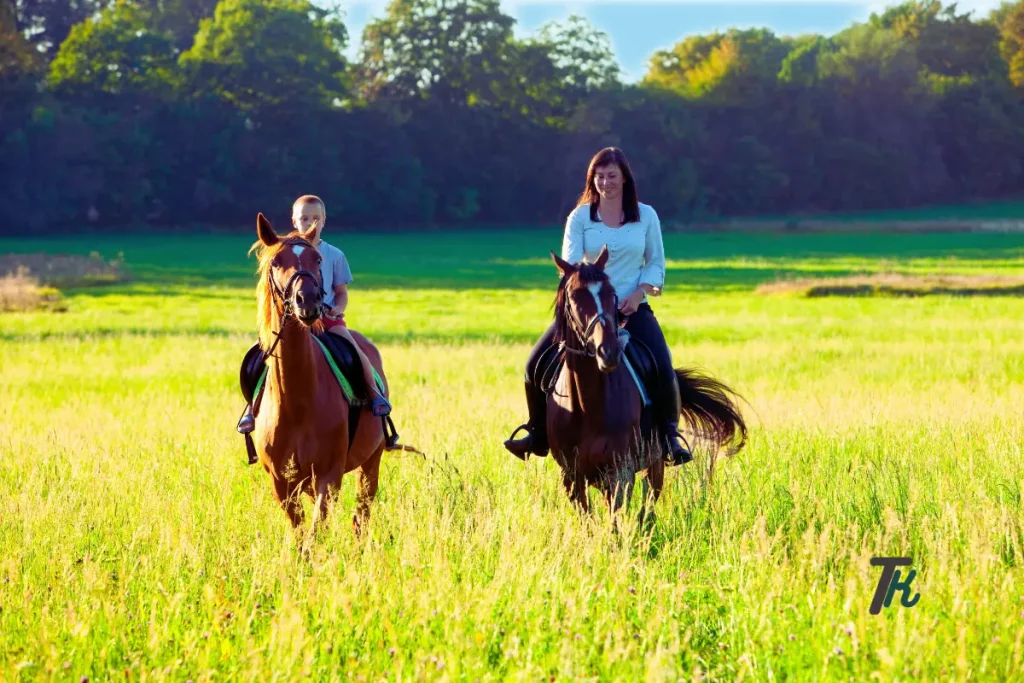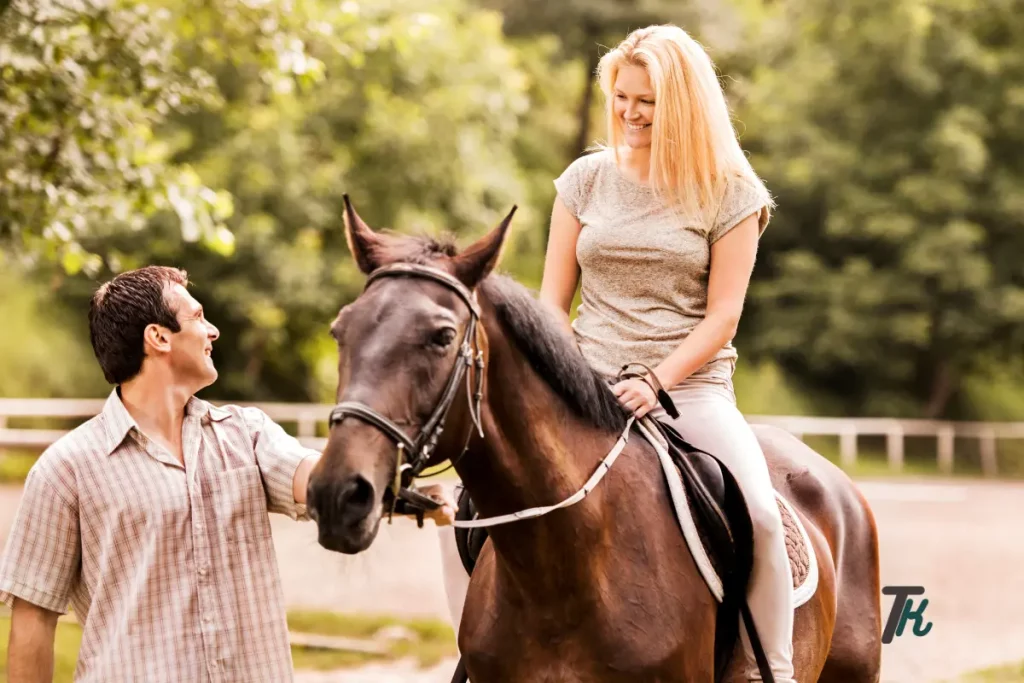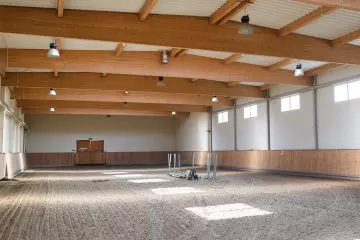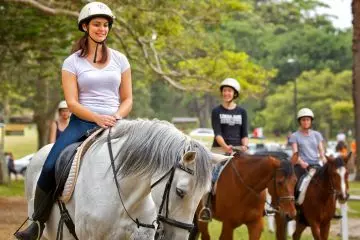As an Amazon Associate, I earn from qualifying purchases.
This article from the teamkathycarter website discusses about Horseback Riding Lessons Costs.
Horseback riding lessons are not just about learning how to ride a horse; they offer many benefits that extend beyond the saddle. While the cost factor can be a concern for many aspiring riders. The investment in horseback riding lessons can bring about physical, mental, and emotional well-being. In this complete guide, we explore the world of horseback riding lessons with different types available to factors affecting costs and tips for finding reasonable options.
Benefits of Horseback Riding- Horseback Riding Lessons
Physical Fitness and Health Benefits
Horseback riding is a fantastic way to stay active and improve physical fitness. Riding helps in improving posture, balance, and coordination, making it a great workout for your core muscles. Also, the cardiovascular benefits of horseback riding cannot be ignored, as it supplies a moderate form of exercise that engages the lower body and core muscles.
Mental and Emotional Well-Being
Beyond the physical benefits, horseback riding has a deep effect on mental and emotional well-being. Spending time with horses can be a restorative experience, offering stress relief and encouraging relaxation. Moreover, the sense of achievement and connection established with the horse can boost confidence and self-esteem.
Different Types of Horseback Riding Lessons
The types of Horseback Riding Lessons:
- Group Lessons vs. Private Lessons
Horseback riding lessons are typically offered in two formats: group lessons and private lessons. Group lessons are a cost-effective option where multiple riders share the session and learn together. On the other hand, private lessons provide one-on-one instruction tailored to individual needs and goals.
- Disciplines Offered
There are different disciplines of horseback riding, including Western and English styles. Each discipline has its own set of techniques and riding styles, catering to different tastes and goals. It is important to select a discipline that resonates with your interests and aspirations.
- Duration and Frequency Options
Horseback riding lessons can vary in duration and frequency, depending on the riding school and program. Some schools offer hourly lessons, while others provide packages with multiple sessions per week. Understanding your schedule and commitment level can help you pick the right period and frequency for lessons.
Factors Influencing Horseback Riding Lesson Costs
- Location-Based Pricing
The cost of horseback riding lessons can vary based on the location of the riding school. Urban areas or regions with a high cost of living may have higher lesson fees compared to rural locations. It is essential to consider the proximity of the riding school to your location and weigh the cost implications.
- Quality and Reputation of the Riding School
The reputation and quality of the riding school can significantly impact the cost of lessons. Well-established schools with experienced instructors and well-maintained facilities. They may charge higher fees due to the quality of instruction and services provided. When considering riding schools, it is important to balance cost with the reputation and quality of the school.
- Instructor Qualifications and Experience
The qualifications and experience of the riding instructors can also influence the cost of lessons. Certified instructors with comprehensive experience may command higher fees for their expertise. Investing in skilled instructors can improve the learning experience and ensure a safe and effective riding environment.
- Included Amenities or Extras
Some riding schools include amenities or extras in their lesson packages. Such as equipment rental, trail rides, or additional training opportunities. These extras may affect the overall cost of lessons but can add value to the learning experience. Consider what amenities are included in the lesson packages and whether they align with your goals and interests.
Tips for Finding Affordable Horseback Riding Lessons
- Researching Local Riding Schools
Start by researching local riding schools in your area to compare their lesson offerings and pricing. Look for schools with positive reviews and a good reputation. As these are indicators of quality instruction and a safe learning environment.
- Taking Advantage of Promotions or Package Deals
Many riding schools offer promotions, discounts, or package deals to attract new riders or retain existing clients. Keep an eye out for special offers to make the most of your budget and access affordable lesson options.
- Volunteer or Work-Exchange Opportunities
Some riding schools offer volunteer or work-exchange programs where participants can assist with barn chores or maintenance in exchange for lessons or discounts. This can be a great way to reduce lesson costs while gaining hands-on experience and building connections within the equestrian community.
- Exploring Community or College Programs
Community centers, colleges, or recreational programs may also offer horseback riding lessons at a lower cost compared to private schools. These programs often cater to beginners and provide a more affordable entry point into the world of horseback riding.
Safety Measures in Horseback Riding
Safety should be a top priority when engaging in horseback riding lessons. Ensure that you have access to proper riding gear, including a well-fitted helmet, boots, and appropriate attire. Following safety guidelines and using the right equipment can prevent accidents and injuries while riding.
Before enrolling in horseback riding lessons, inquire about the safety protocols and procedures in place at the riding school. A reputable school should have safety measures in position, such as trained staff, supervised riding areas, and well-maintained equipment. Ensure that the school prioritizes rider safety and adheres to industry standards.
Understanding horse behavior is crucial for safety and effective communication while riding. Learn about the body language of horses, how to approach and handle them, and basic riding commands. Knowledge of horse behavior can help you build a strong bond with your horse and prevent misunderstandings or accidents.
How to Choose the Right Horseback Riding Instructor
- Instructor Qualifications and Certifications
When selecting a riding instructor, look for individuals with relevant certifications and qualifications in horseback riding instruction. Certified instructors have undergone training and assessment to ensure they meet industry standards for teaching skills and safety practices.
- Teaching Style and Approach
Consider the teaching style and approach of the instructor to ensure it aligns with your learning preferences and goals. Some instructors may focus on traditional techniques, while others may prioritize a more relaxed or natural approach. Choose an instructor whose teaching style resonates with you and fosters a positive learning environment.
- Compatibility with Your Learning Goals
It is essential to find an instructor who is compatible with your learning goals and aspirations. Whether you are a beginner looking to build foundational skills or an experienced rider seeking to advance your abilities, communicate your goals to the instructor to ensure they can tailor the lessons to meet your needs.
Real Experiences: Testimonials and Reviews
Before selecting a riding school or instructor, gather authentic reviews and testimonials from previous clients. Online platforms, social media, and word-of-mouth referrals can provide valuable insight into the quality of instruction, safety standards, and overall experience offered by the school.
Positive testimonials and reviews can greatly influence your decision-making when choosing a riding school or instructor. Consider the feedback from past clients regarding the instructor’s teaching style, communication skills, and the overall learning experience. Look for testimonials that highlight the instructor’s professionalism, expertise, and dedication to student success.
Last Word about Horseback Riding Lessons
In conclusion, horseback riding lessons offer a multitude of benefits for physical fitness, mental well-being, and personal growth. While the cost of lessons may vary depending on factors such as location, reputation, and instructor qualifications, there are ways to find affordable options without compromising on quality. By researching local riding schools, exploring promotions, and prioritizing safety and instructor compatibility, you can embark on a rewarding journey into the world of horseback riding. Remember to prioritize safety, communicate your goals with your instructor, and enjoy the enriching experience of connecting with these magnificent animals. Start your horseback riding journey today and discover the joys of riding, one lesson at a time.
Frequently Asked Questions (FAQs) About Horseback Riding Lessons
How many lessons do you need to be good at horse riding?
The number of lessons needed to become proficient at horse riding varies depending on individual factors such as previous experience, physical abilities, and dedication to practice. Generally, beginners can expect to take several lessons to build a solid foundation of riding skills and develop confidence in handling a horse.
For someone new to horse riding, it is recommended to start with introductory lessons to learn the basics of mounting, dismounting, steering, and controlling the horse’s pace. These initial lessons focus on building a strong rapport with the horse, understanding basic riding techniques, and practicing balance and coordination in the saddle.
As riders progress, they may take intermediate and advanced lessons to refine their skills, learn more advanced maneuvers such as jumping or dressage, and work on developing a deeper connection with the horse. Consistency in practice and regular lessons are key to mastering horse riding techniques and becoming a skilled rider.
Ultimately, the number of lessons needed to excel at horse riding will vary for each individual, but a commitment to consistent practice, ongoing learning, and working with experienced instructors can significantly contribute to becoming proficient in this exhilarating sport.
2. How much does the horse cost?
The cost of purchasing a horse can vary widely based on factors such as breed, age, training, temperament, and intended use of the horse. In general, horses can range in price from a few hundred dollars for a rescue or retired horse to tens of thousands or even hundreds of thousands of dollars for top-quality competition or show horses.
When considering the cost of buying a horse, it is important to factor in additional expenses such as boarding fees, feed, veterinary care, farrier services, tack and equipment, training, and other ongoing maintenance costs. These expenses can add up, so prospective horse owners should carefully budget and plan for the financial commitment of owning a horse.
For those looking to get started with horse riding without the upfront cost of purchasing a horse, taking lessons at a reputable riding school or leasing a horse from a barn can be more cost-effective options. Leasing allows riders to experience horse ownership without the long-term financial commitment and responsibilities associated with owning a horse outright.
How much of a workout is horseback riding?
Horseback riding is a physically demanding activity that can provide a full-body workout and engage a variety of muscle groups. Riding requires core strength, stability, balance, and coordination to effectively communicate with the horse and maintain proper riding posture.
Engaging in horseback riding can work muscles in the legs, thighs, core, back, and arms as riders maintain their position in the saddle, post to the horse’s trot, and control the horse’s movements through cues and commands. Riding at different gaits, such as walking, trotting, and cantering, can increase the intensity of the workout and challenge riders to adjust their position and balance accordingly.
In addition to the physical demands of riding, caring for and grooming a horse can also provide a workout by lifting saddles, bales of hay, or grooming equipment, mucking stalls, and performing other barn chores. Overall, horseback riding offers a dynamic and engaging workout that combines physical exercise with the joy of interacting with horses and being outdoors.
Is horse riding easy?
Horse riding is a skill that requires practice, patience, and dedication to master, so it may not be considered “easy” for everyone. While some individuals may find horse riding to be a natural and enjoyable activity, others may initially struggle with the physical and mental demands of riding.
Beginner riders may face challenges such as developing balance and coordination in the saddle, communicating effectively with the horse, and building confidence in handling the reins and controlling the horse’s movements. Learning to ride requires proper instruction, practice, and time spent developing a connection with the horse to understand its behavior and responses.
With consistent practice, guidance from experienced instructors, and a willingness to learn and improve, riders can overcome obstacles and progress in their riding abilities. As riders gain knowledge and experience, they can become more confident, proficient, and comfortable in the saddle, leading to a rewarding and fulfilling journey in the world of horse riding.
Overall, while horse riding may present challenges for beginners, the process of learning and growing as a rider can be immensely rewarding and enjoyable for those who are passionate about horses and committed to honing their equestrian skills.
As an Amazon Associate, I earn from qualifying purchases.
